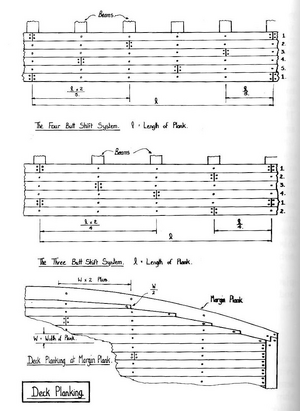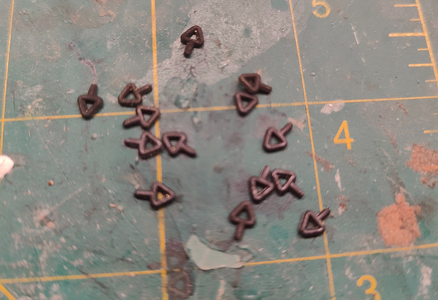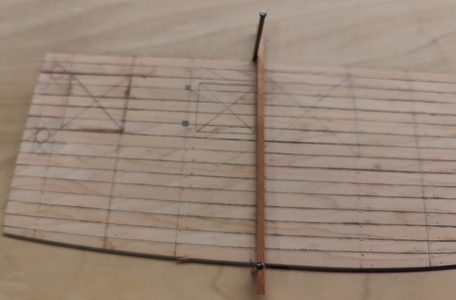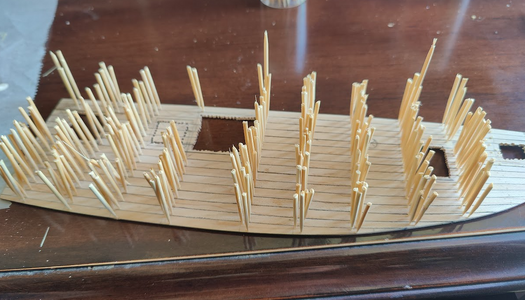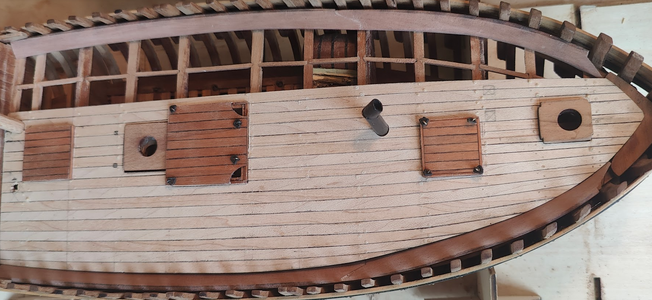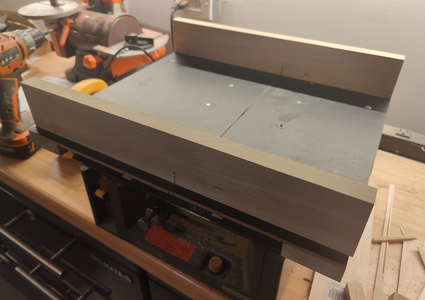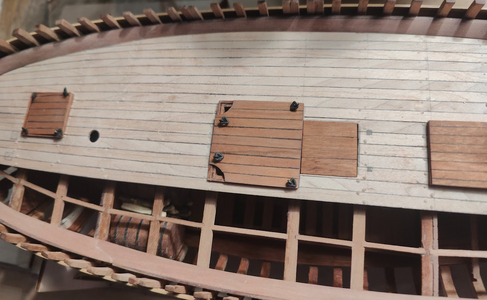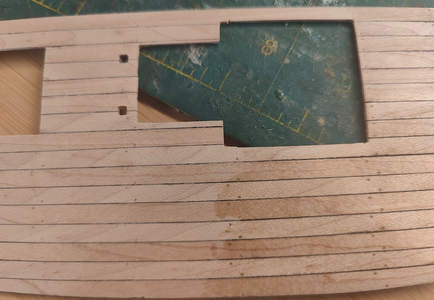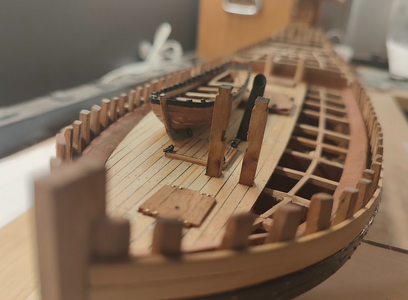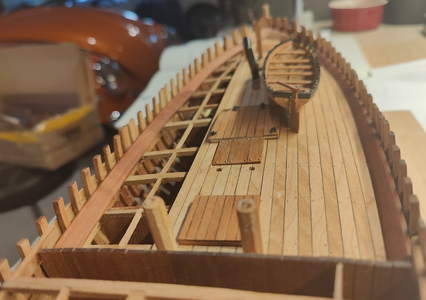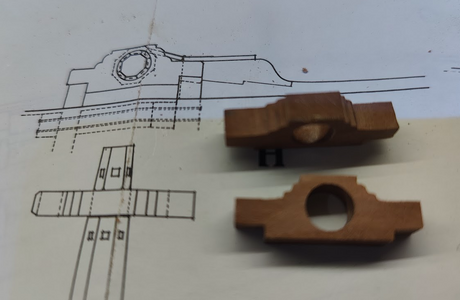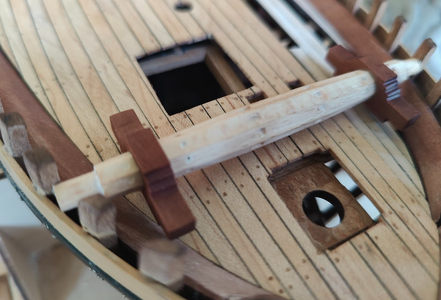Practice, practice, practice.
I made another set of waterways from basswood. After three tries, the scarf joint almost looked right (top photo... These pieces will be discarded). It turns out that my vise was too large, so I purchased a small 2" vise and tried again using pearwood. Much better result.
It then occurred to me that I should probably have started from the fore and worked my way aft. So I have begun to fabricate the fore most piece and will attempt to fit the middle waterway in between.
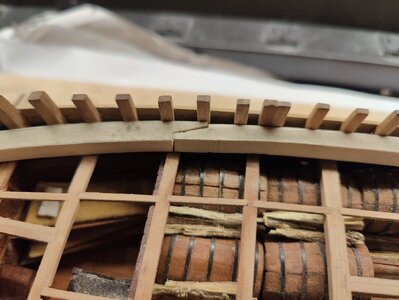
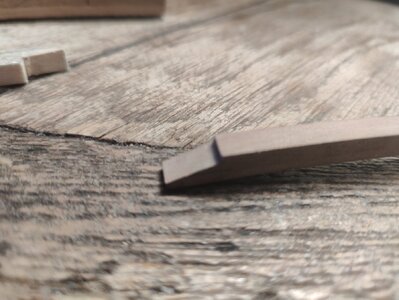

I made another set of waterways from basswood. After three tries, the scarf joint almost looked right (top photo... These pieces will be discarded). It turns out that my vise was too large, so I purchased a small 2" vise and tried again using pearwood. Much better result.
It then occurred to me that I should probably have started from the fore and worked my way aft. So I have begun to fabricate the fore most piece and will attempt to fit the middle waterway in between.








